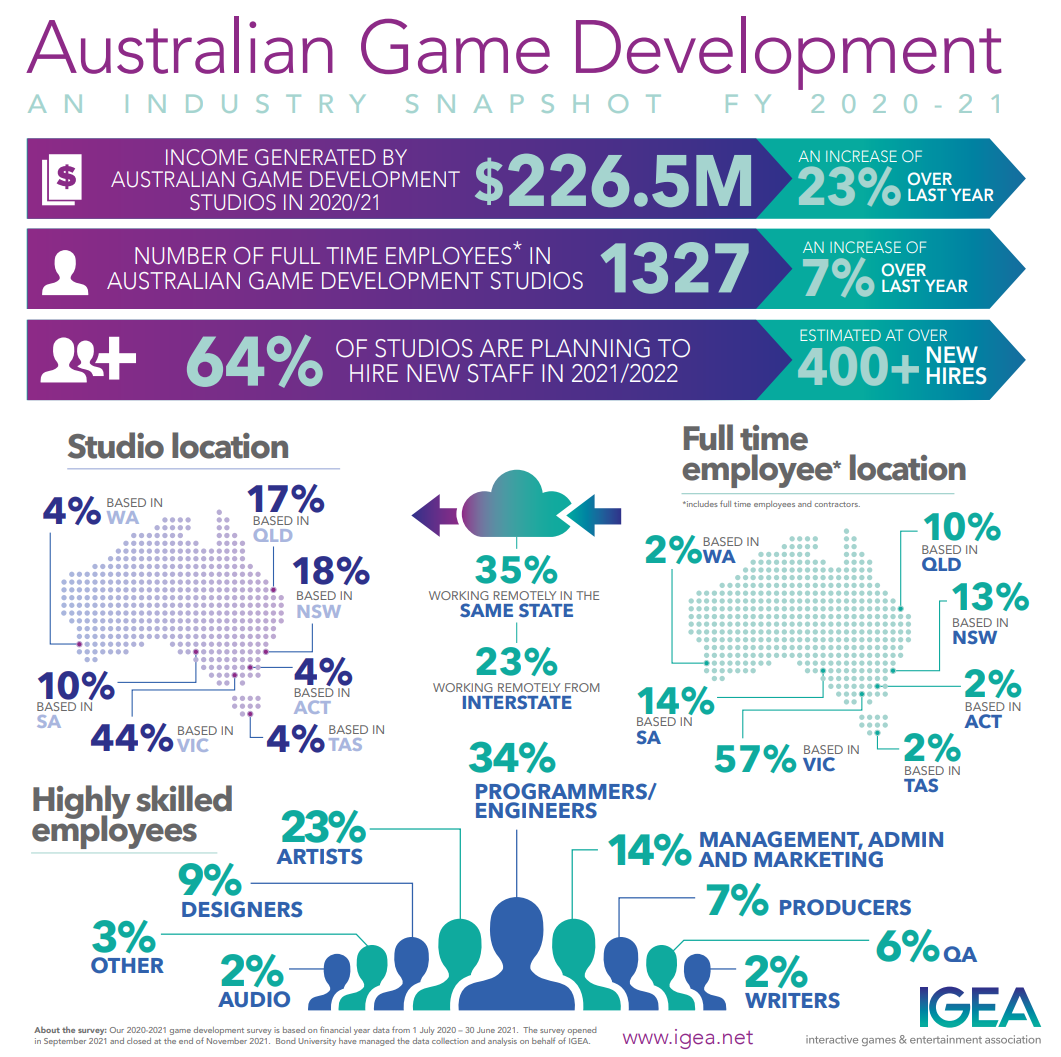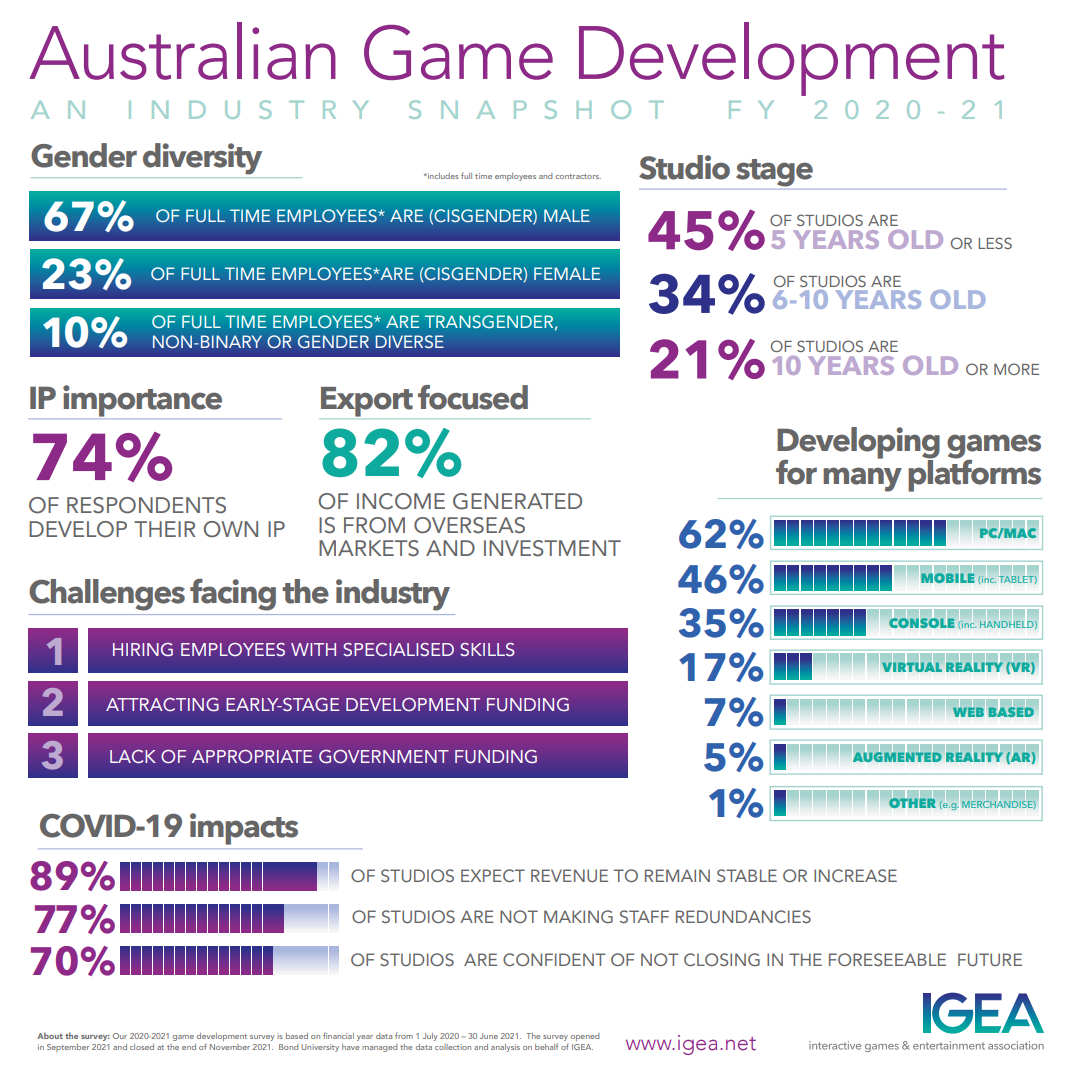The Australian Interactive Games and Entertainment Association (IGEA) has summed up the results of 2021. She estimated that over the current year, game studios in Australia have earned a total of $161.6 million*. The developers received the vast majority of this amount from abroad.
*This figure, like all others in the IGEA report, may differ from the actual data. Analysts indicated that during the study they contacted more than 400 Australian studios, but only 187 passed the survey until the end.
Also note that IGEA wrote about the earnings of companies in Australian dollars. We converted it into US dollars.
Key findings
- In total, the profit of the Australian gaming industry increased by 23% over the year.
- Of the $161.6 million profit, only $29 million (18%) of local studios earned domestically, the rest came from abroad.
- A significant part of studios (89%) expect that next year their revenues will at least remain at the same level or increase. This may be facilitated by a tax deduction of 30%, which gaming companies will be able to claim from July 2022.
- At the end of 2021, 1,327 people worked in Australian studios – an increase of 7% compared to last year. 64% of studios plan to expand their staff even more in 2022.
- Although the number of employees has increased, studio owners still note that it is difficult for them to find new employees in their companies. There are not enough specialized specialists in Australia. Part of the reason for this was the closure of borders due to the COVID-19 pandemic. The companies also blame the country’s poor migration policy and the fact that many specialists seek to go abroad and get a job in foreign studios.
- 67% of employees of Australian gaming companies are cisgender men (in 2020, their share was equal to 80%). Another 23% of employees are cisgender women (there were 17%), and 10% of employees are transgender, non—binary persons and LGBT representatives (there were 3%).
- 74% of studios were engaged in original IP during 2021;
- The majority of Australians have worked on PC games (62%). Also, many made titles for mobile devices (46%) and consoles (35%). At the same time, VR and AR games were developed by only 7% and 5% of teams, respectively.



